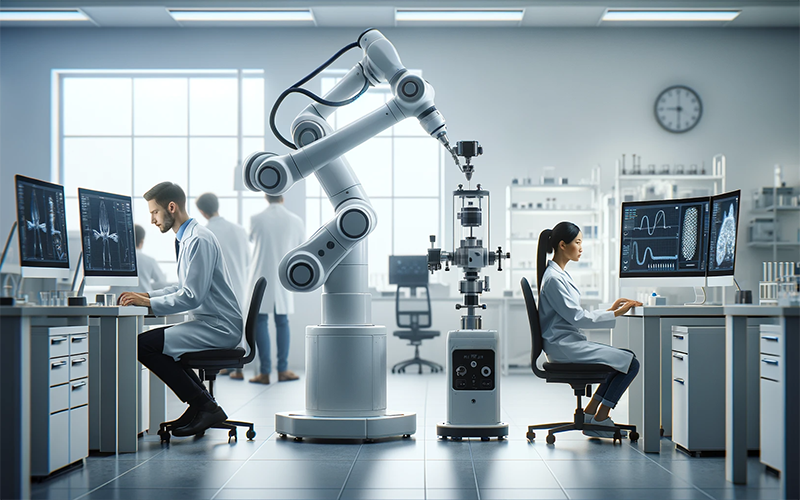Coscientist, an AI-based system, has successfully demonstrated its capability to autonomously plan and execute complex, real-world chemistry experiments.
This development heralds a new era of discovery, potentially accelerating the pace at which human scientists can achieve breakthroughs.
What is Coscientist?
Developed by a team led by Gabe Gomes, a chemist and chemical engineer at Carnegie Mellon University, Coscientist represents a remarkable fusion of artificial intelligence and chemistry.
It’s an AI-driven system adept at learning Nobel Prize-winning chemical reactions and designing laboratory procedures to execute them. This achievement marks the first instance of a non-organic intelligence independently planning, designing, and executing such intricate reactions.
How does Coscientist function?
At the heart of Coscientist are large language models, including versions like GPT-4 from OpenAI. These models analyse vast amounts of data, including scientific texts, to extract meaning and patterns. Coscientist combines these models with various software modules, enabling it to perform tasks routinely undertaken by research chemists. These tasks include searching for chemical compound information, reading technical manuals for robotic lab equipment, coding experiments, and analysing outcomes to refine its approaches.
Coscientist’s impact on chemistry and beyond
The efficacy of Coscientist was tested on complex palladium-catalysed cross couplings, crucial in pharmaceutical development and other carbon-based molecule applications.
The AI demonstrated an ability to plan and execute experiments, leading to the synthesis of substances like aspirin, acetaminophen, and ibuprofen. It showcased “chemical reasoning,” utilising publicly available chemical information and adjusting its experimental plans based on molecular data.
Integrating robotics with AI
An integral aspect of Coscientist’s operation involved robotic chemistry equipment.
For the first time, these robots were controlled by AI-generated computer code, performing tasks with precision. Coscientist’s ability to translate theoretical plans into actionable instructions for laboratory robots marks a significant advancement in synthesising chemical compounds.
The implications for the future
Coscientist not only accelerates scientific discovery but also democratises access to complex experimental processes.
It allows scientists from various fields to engage in intricate chemical reactions, regardless of their specific training. This AI-assisted system could be a pivotal tool in expanding the horizons of research, making continuous discoveries, and enhancing the efficiency of scientific experimentation.
Responsible use and future prospects
As the capabilities of AI in scientific research are embraced, it’s imperative to be mindful of its responsible use. Understanding AI’s potential and limitations is crucial in forming informed policies to prevent misuse. Coscientist exemplifies a significant step towards harnessing AI for safe and secure scientific advancements.
Coscientist is not just a tool but a harbinger of a new scientific paradigm, and it opens up possibilities for faster discoveries, bridging the gap between the vast, unexplored domains of nature and the limited availability of trained scientists.
For university-level engineering students and professionals, Coscientist offers a glimpse into a future where AI and human intelligence synergise to explore the frontiers of science.




